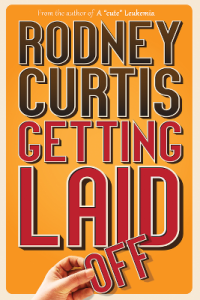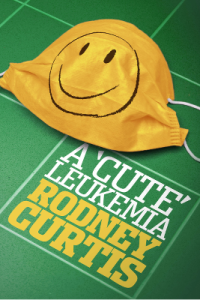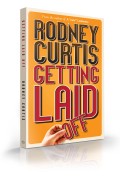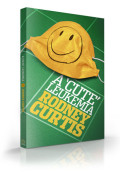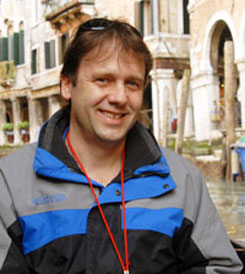With the 100th anniversary of the Armenian Genocide happening this month,
I’m re-sharing my personal experience at the memorial to its the slain citizens.
This story appeared in my first book, Spiritual Wanderer, from which this website gets its name.
The trip was exhausting. We were behind the Iron Curtain and at the mercy of the official Soviet travel agency, Intourist. It was 1984. The Cold War was showing no real signs of flaring up or calming down, and my intestines were wracked with what I liked to refer as the commie crud. I sat in a hotel in downtown Moscow, across the street from an enormous statue depicting Russian space flight and all I wanted to do was bend over the toilet. I felt worse than the embalmed body of Lenin who laid in state just down the street.
Our church peace mission, to come visit the USSR, was going along wonderfully up until that point. We were traveling to several different republics including Soviet Georgia, Azerbaijan and Armenia. But what struck me as odd, as totally incomprehensible, was the bizarre fact that here I was with my borscht coming out both ends and all the while American missiles were pointing directly at my butt as I heaved yet another peace offering into the politburo porcelain. I couldn’t get over the fact that I was one renegade soldier in South Dakota away from witnessing Ground Zero up close at the beginning of the end of civilization as we knew it. Then I puked again.
Earlier in the trip — or later, I can’t remember when — my priest-friend Ron and I were walking near Vladimir Lenin’s tomb singing John Lennon songs. It was surreal as we strolled along Red Square knowing we were some of the only Americans the Russian citizenry had seen up until that point. And there we were singing “Back in the USSR.”
Imagine!
Our trip was meant to be a non-political journey through the lands of our mortal enemy in order to meet normal everyday folks and say, “We don’t really feel like bombing you. Do you really wanna destroy us?”
Everywhere it seemed, I had to explain that all of us weren’t like our president. I became quite good at uttering my favorite phrase at just the right time, “Reagan nyet, Mir da!” Which roughly translated to “No, I’m not a Ronald Reagan fan and I prefer Peace to its alternative.”
It was a jolly good time, really. Knowing that I was probably being watched every minute of my journey. One guy tried to buy my pants, but I think he might have been a KGB agent just testing to see if I would dip my toes into the infamous black market. One night up in Leningrad — with the sun not really setting and it being light until after 11 pm — I ventured out into the public square around the hotel. After meeting some kids my age and giving them a few trinkets, including a “Say Yes to Michigan” t-shirt, the doorman at the hotel wouldn’t let me back in.
“Nyet, Ruskie,” he said pointing at me, implying that I was Russian and somehow not welcome in. I had heard about this earlier and knew that Soviet citizens weren’t allowed in the official tourist hotels due to some weird fear that perhaps we’d influence their thinking. Or that they’d try to rip us off. Anyway, the doorman was adamant about keeping me out even when I showed him my room key. I’m not proud of this, but the only thing I could think to do was repeat an old car commercial to show I was, like in the old war movies, a Yank.
“Look, I’m an American,” I pleaded. “Baseball, hotdogs, apple pie and Chevrolet … you gotta let me in!” I think that swayed him. No Russian kid would be that silly. He waved his arm gruffly and allowed me to walk in.
__________
The highlight of the peace mission, though, was our trip to Yerevan, the capital of Armenia. The city was beautiful and the people were very nice to us foreigners. Throughout our entire stay, Mt. Ararat was visible outside the bustling city. The mountain is the mythic final resting place of Noah’s ark and its rightful boundaries were hotly disputed between the Turks and the Armenians.
Outside of Yerevan, on one of the many hills surrounding the city, was a memorial to the slain Armenians. The early part of the 1900s was a rotten time for Armenia and our guides explained to us that 1/3 of the population was killed by the Turks, 1/3 emigrated and only a third remained in the country. This memorial was a powerful shrine to those who died.
It was an impressive structure that looked like an enormous unfolding flower, with giant stone or concrete arms where the petals would be. Inside, where the bud might be, was an eternal flame burning in remembrance. You could walk inside the memorial and stand around the fire.
Our group did just that, about 20 of us or so. And there — the furthest point I’d ever been from home — I felt the most powerful, otherworldly feeling I’ve ever experienced. It wasn’t just me either. All the people in our group, those my age up through retirees, felt the same phenomenon. We were standing there and the most overpowering feeling of sadness hit us all. A young seminarian in our group broke into a spontaneous prayer and later he was escorted out, arm in arm, by an old white-haired woman who was normally the life of the party. And they were both crying.
It hit us pretty hard, just how mournful that place was. Sure, we were acutely aware of war and genocide; after all, that’s why we were on the mission in the first place. But there was something more. The deep, internal, visceral sadness that swept over us was an undeniable message that we were in the presence of something bigger and more powerful than ourselves. Sure, the horrific events that the memorial stood for had happened 70 years prior, but the emotion swirling around the grounds was as real and pervasive as if the genocide had just occurred.
I still haven’t come to understand exactly what we were feeling that day in Yerevan, but I haven’t probed too deeply either. I imagine other people have witnessed the same effect either there or in other holy shrines around the world. My guess is that the best thing to do, is honor those remembered by such shrines and then not stick around for too long afterward.
There was a sense, inside, that we were somehow intruding. But we were also forced to experience something that we weren’t expecting, or used to feeling.
In the end, the message I got — soft yet clear — was if we don’t fully remember our abhorrent past in all its shameful detail, we’re more likely to repeat or simply gloss over our tragedies.
I’m not sure if I’ll ever experience such a powerful, otherworldly emotion. I’m not sure if I want to either. But I feel lucky to have had such an experience.
April 24, 2015 marks the 100 year anniversary of the beginning of Armenia’s Genocide.
To read more about it, visit the Wikipedia page addressing the issue of the 1.5 million slain Armenians.
